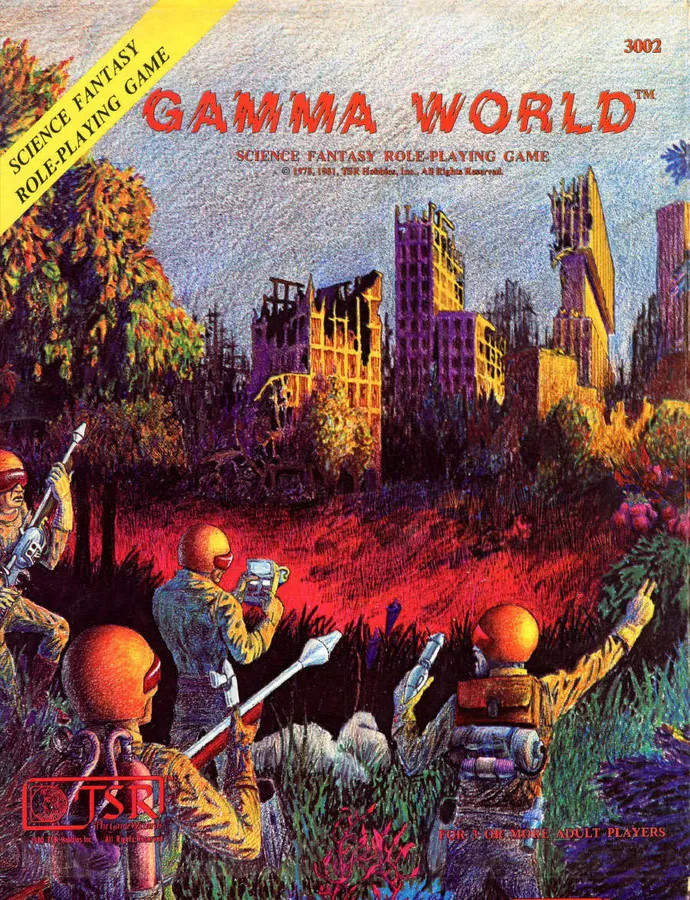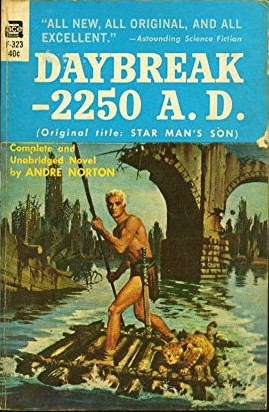Following two installments, I’ve decided to alter my methodology for reading through the SF Encyclopedia. Rather than going through this enormous (and extremely useful) compendium alphabetically, I will use their Random Entry generator, select an entry and highlight it.
 Today’s Random Entry is for Gamma World, a game from TSR (the D&D folks).
Today’s Random Entry is for Gamma World, a game from TSR (the D&D folks).
Gamma World was TSR’s attempt at creating a post-apocalyptic world role playing game, actually, not immediately post-apocalyptic, but a world in which “The Great Upheaval” occurred several centuries before game time.
Unfortunately for me, I prefer my post-apocalyptic worlds to be fresh from the oven, more Mad Maxy or Albert & Blood in composition, (even Iron Dreamy); you’ll find no “Burn Pit Screamers” here.
I had this game, went through it a few times, but it never inspired my friends and I to actually play it. The rules are very much D&D – based.
Gaming science fictional themes is, for me, hit-or-miss. Starship Troopers (Avalon Hill, original edition), a tactical war game, was a lot of fun, until I discovered the killer strategy (for the ‘bugs’) and it became unplayable after that. Like trying to play a game of Risk when your opponent has all but one country at gamer start. RPGs though really, really depend on familiarity with the source materials and whether or not players get to portray themselves in the ways that appeal to them in that setting. If you think that one of the coolest aspects of Dune is riding sandworms and it never manifests as a reasonable option during the game, you’re going to be disappointed, no matter how well the game plays.
The game is now in its 7th edition (from Wizards of the Coast), which was released in 2010.
Of the game, SFE writes:
The original edition of Gamma World is an atomic age fantasy set in the eponymous “third age” of the Earth, a Post-Holocaust world full of psychic Mutants, forgotten super-technologies and devastated Cities. The background is Science Fantasy rather than realistic science fiction, influenced by such novels as Andre Norton’s Star Man’s Son, 2250 A.D. (1952) and Sterling E Lanier’s Hiero’s Journey (1973). Exotic mutations abound; characters can become mutated simply by entering radioactive areas, acquiring talents similar to those seen in the X-Men Comics, from the Psionic power to disrupt molecular structures to the ability to sprout razor-sharp leaves. The gameplay is full of moments of quirky humour and bizarre combat as characters make use of a huge range of curious abilities and struggle with malfunctioning ancient Robots and poorly understood pre-disaster artefacts.
 Personally, I think that a re-read of Norton’s Star Man’s Son would be more rewarding past time.
Personally, I think that a re-read of Norton’s Star Man’s Son would be more rewarding past time.










